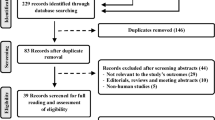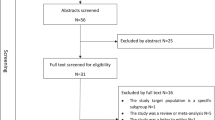Abstract
We compared the structure and content of guidelines for hypertension management across countries to gain an understanding of where differences between them originate from. Four guidelines published between 2003 and 2006 were selected. Two were issued by national agencies in the United Kingdom and France, and two were issued by working groups or national medical societies in the United States and in Europe. The structure of guidelines, the content of each section and their underlying bibliographic references were compared between authoring bodies. If differences were found between guidelines in terms of content, we analysed the rationales. The guidelines were sufficiently similar in structure, showing common sections such as lifestyle interventions, cardiovascular risk assessment and drug therapies. However, contentwise, major differences were observed across the four hypertension guidelines in virtually every section of the document. The definition of hypertension was consistent, whereas the grade stratification was not. Information concerning the blood pressure self-measurement, the estimation of cardiovascular risk and the antihypertensive drugs proposed for initial treatment also varied. Most of the differences were present in both guidelines and their rationales, but some were only found in the guidelines. The bibliographic references for the rationales differed significantly, with only 1.2, 2.2 and 8.8% of the total number of references were common to four, three and two authoring bodies, accounting for the variability. We conclude that improving the selection process of bibliographic references and the extraction process of guidelines from the rationales might be the first step to harmonize guidelines' development.
This is a preview of subscription content, access via your institution
Access options
Subscribe to this journal
Receive 12 digital issues and online access to articles
$119.00 per year
only $9.92 per issue
Buy this article
- Purchase on Springer Link
- Instant access to full article PDF
Prices may be subject to local taxes which are calculated during checkout



Similar content being viewed by others
References
McGlynn E, Ash S, Adams J, Keesey J, Hicks J, De Cristofaro A et al. The quality of health care delivered to adults in the United States. N Engl J Med 2003; 348: 2635–2645.
Detsky A . Regional variation in medical care. N Engl J Med 1995; 333: 589–590.
Patel V, Arocha J, Diermeier M, Greenes R, Shortliffe E . Methods of cognitive analysis to support the design and evaluation of biomedical systems: the case of clinical practice guidelines. J Biomed Inform 2001; 34: 52–66.
Winslow C, Solomon D, Chassin M, Kosecoff J, Merrick N, Brook R . The appropriateness of carotid endarterectomy. N Engl J Med 1988; 318: 721–727.
Chassin M, Kosecoff J, Park R . Does inappropriate use explain geographic variations in the use of health care services? A study of three procedures. JAMA 1987; 258: 2533–2537.
Swales J . Guidelines on guidelines. J Hypertens 1993; 11: 899–903.
Hitchen L . Conflicting guidelines on same topics cause doctors confusion say MPs. Br Med J 2007; 335: 1012.
McAlister F, van Diepen S, Padwal R, Johnson J, Majumdar S . How evidence-based are the recommendations in evidence-based guidelines? PLoS Med 2007; 4: 1325–1332.
Fahey T, Peters T . What constitutes controlled hypertension? Patient based comparison of hypertension guidelines. Br Med J 1996; 313: 93–96.
Fahey T, Peters T . Clinical guidelines and the management of hypertension: a between-practice and guideline comparison. Br J Gen Pract 1997; 47: 729–730.
Marshall T . Evaluating national guidelines for prevention of cardiovascular disease in primary care. J Eval Clin Pract 2005; 11: 452–461.
Mashru M, Lant A . Interpractice audit of diagnosis and management of hypertension in primary care: educational intervention and review of medical records. Br Med J 1997; 314: 942–946.
AGREE Collaboration. Development and validation of an international appraisal instrument for assessing the quality of clinical practice guidelines: the AGREE project. Qual Saf Health Care 2003; 12: 18–23.
Vogel N, Burnand B, Vial Y, Ruiz J, Paccaud F, Hohlfeld P . Screening for gestational diabetes: variation in guidelines. Eur J Obstet Gynecol Reprod Biol 2000; 91: 29–36.
Burgers J, Bailey J, Klazinga N, Van Der Bij A, Grol R, Feder G . Inside guidelines: comparative analysis of recommendations and evidence in diabetes guidelines from 13 countries. Diabetes Care 2002; 25: 1933–1939.
Haute Autorité de Santé (HAS). Essential Hypertension—Guidelines 2005. Available at http://www.has-sante.fr.
National Institute for Health and Clinical Excellence. Hypertension: Management of Hypertension in Adults in Primary Care 2006. Available at http://www.nice.org.uk.
Chobanian AV, Bakris GL, Black HR, Cushman WC, Green LA, Izzo Jr JL et al. Prevention, detection, evaluation, and treatment of high blood pressure (JNC 7). J Hypertens 2003; 42: 1206–1252.
Cifkova R, Erdine S, Fagard R, Farsang C, Heagerty A, Kiowsky W et al. Practice guidelines for primary care physicians: 2003 ESH/ESC hypertension guidelines. J Hypertens 2003; 21: 1779–1786.
Mancia G, De Backer G, Dominiczak A, Cifkova R, Fagard R, Germano G et al. Guidelines for the Management of Arterial Hypertension—The Task Force for the Management of Arterial Hypertension of the European Society of Hypertension (ESH) and of the European Society of Cardiology (ESC). J Hypertens 2007; 25: 1105–1187.
Georg G, Jaulent M-C . An environment for document engineering of clinical guidelines. In: Friedman CP (ed). Proceedings of the American Medical Informatics Association, 2005; Omnipress: Washington, DC, pp 276–280.
Georg G, Jaulent M-C . A document engineering environment for clinical guidelines. In: King PR, Simske S (eds). Proceedings of the 2007 ACM Symposium on Document Engineering, 2007; Winnipeg, Canada. ACM Press: New York, USA, pp 69–78.
Van der Velde G, Van Tulder M, Côté P, Hogg-Johnson S, Aker P, Cassidy J . The sensitivity of review results to methods used to appraise and incorporate trial quality into data synthesis. Spine 2007; 32: 796–806.
Thomson R, Lavender M, Madhok R . Fortnightly review: how to ensure that guidelines are effective. Br Med J 1995; 311: 237–242.
Haines A, Feder G . Guidance on guidelines. Br Med J 1992; 305: 785–786.
Thomas S . Standard setting in The Netherlands: impact of the human factor on guideline development. Br J Gen Pract 1994; 44: 242–243.
Thomson R, McElroy H, Sudlow M . Guidelines on anticoagulant treatment in atrial fibrillation in Great Britain: variation in content and implications for treatment. Br Med J 1998; 316: 509–513.
Michie S, Berentson-Shaw J, Pilling S, Dieppe P, Raine R, Cluzeau F et al. Turning evidence into recommendations: protocol for a study of guideline development groups. Implement Sci 2007; 5: 2–29.
Mlika-Cabanne N, Twaddle S, Laurence M . Evidence Tables—The ‘Holy Grail’ for literature reviewers. 4th Annual G-I-N Conference 2007; available at http://www.g-i-n.net/.
GRADE Working Group. Grading quality of evidence and strength of recommendations. Br Med J 2004; 328: 1490.
Fervers B, Burgers JS, Brouwers M, Remy-Stockinger M, Simon A, Mlika-Cabanne N et al. Guideline adaptation: a methodology to enhance efficiency in guideline development and improve utilization. 4th Annual G-I-N Conference 2007; available at http://www.g-i-n.net/.
Acknowledgements
Gersende Georg is funded through a post-doctoral fellowship from ‘Region Ile-de-France’.
Author information
Authors and Affiliations
Corresponding author
Additional information
Supplementary Information accompanies the paper on the Journal of Human Hypertension website (http://www.nature.com/jhh)
Supplementary information
Rights and permissions
About this article
Cite this article
Georg, G., Colombet, I., Durieux, P. et al. A comparative analysis of four clinical guidelines for hypertension management. J Hum Hypertens 22, 829–837 (2008). https://doi.org/10.1038/jhh.2008.99
Received:
Revised:
Accepted:
Published:
Issue Date:
DOI: https://doi.org/10.1038/jhh.2008.99
Keywords
This article is cited by
-
Chinese herbal formulas for treating hypertension in traditional Chinese medicine: perspective of modern science
Hypertension Research (2013)



